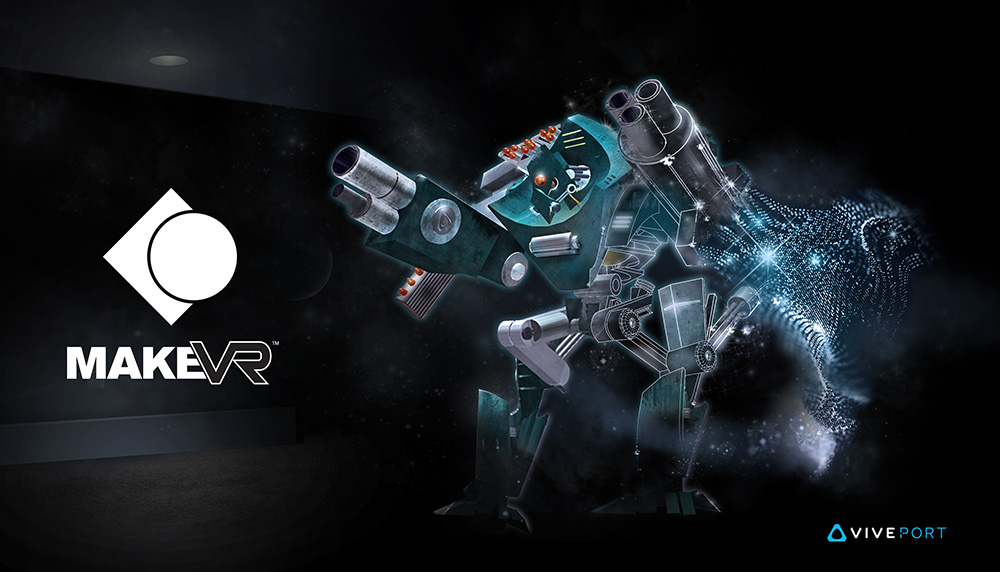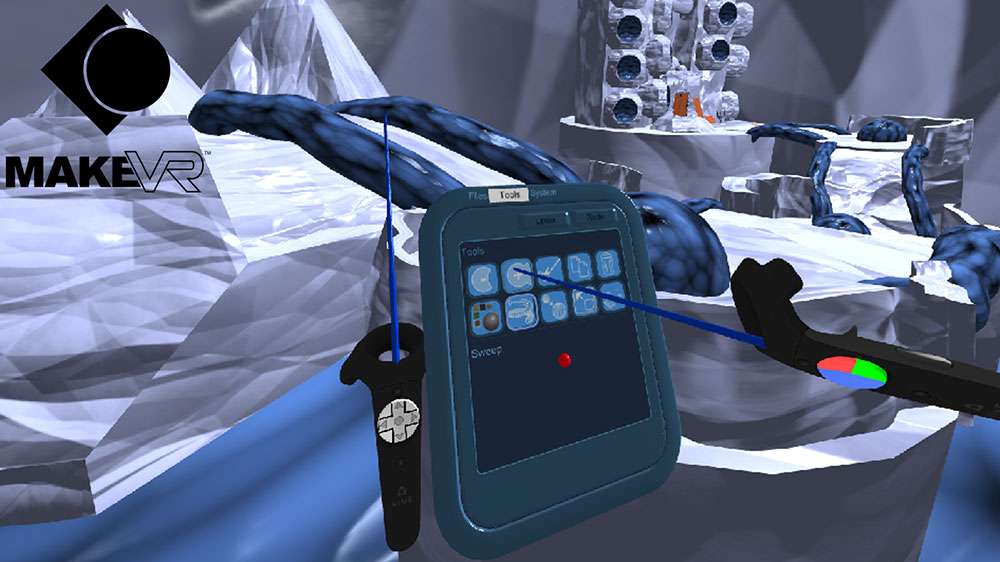California software company Sixense has launched a 3D design platform for virtual reality. MakeVR has been developed solely for the HTC Vive virtual reality headset. Objects created in MakeVR can be exported as an .sab, .stl, or .obj to be subsequently 3D printed.
Co-founder and CEO of Sixense, Amir Rubin, believes MakeVR “is a win for makers, designers and the 3D printing ecosystem.”

3D printing with MakeVR
MakeVR allows users to sculpt three-dimensional objects using the Vive’s virtual reality headset and accompanying handheld controllers. The application may give new designers a more accessible introduction to 3D designing. Taiwanese company, HTC held an interview with Sixense’s Steve Hansted on their blog to discuss the software and its intended use. Hansted remarked that MakeVR was the best option for those with a 3D printer. He said,
The professional solid-modeling CAD engine at the core of MakeVR ensures that whatever content you create will be ‘water tight’ and can be sent directly to a 3D printer without the need to be cleaned up. This means that your model will be printed correctly the first time, without potential printing failures that can arise from a litany of issues common with the use of a polygonal modeler.

Virtual reality designing
MakeVR is not the first platform for 3D design on HTC’s Vive, Dassault Systèmes’ recently released their 3DExperience product viewer for the virtual reality device. However, the software does not yet allow users to design using the headset. Instead, 3DExperience is intended for industrial customers view designs in a native 3D environment.
Joel Breton, Head of Vive Studios, says, “MakeVR is a first-of-its-kind advanced creativity app for VR.” Breton adds,
We recognize how the intuitive and immersive environment of VR will revolutionize digital modeling. We worked with Sixense to create MakeVR as an accessible yet advanced creativity app for Vive where room-scale VR gives creators a virtual workshop, and the use of natural physical motions brings unprecedented expressiveness and intuitiveness to object design.
Shapeways integration
Sixense has integrated Shapeways into the software so, “with one button click your model is automatically uploaded to your account and opened at Shapeways.com.” This allows users to review their objects before printing. Virtual reality has clear application for 3D designing as it makes use of truly three-dimensional environment. Virtual reality applications attempt to provide a more natural approach to designing in 3D dimensions rather than using a mouse or stylus.
This is something that CEO of Shapeways, Pete Weijmarshausen, believes is key for beginners. As he says,
Shapeways is excited about the launch of MakeVR because it will help lower the barrier of entry for people to try their hand at 3D design. With cutting-edge tools like MakeVR, it becomes more intuitive and perhaps fun for people to express what they want through 3D modeling, and we’re incredibly proud to connect MakeVR to our platform and enable the creative process with Shapeways’ services.
The intial release of MakeVR will be accompanied by a Pro version later this year. According to Hansted, the Pro version “will include precision tools for more accurate placement of objects within your scene and more accurate cuts and paths.”
Facebook CEO, Mark Zuckerberg also sees the benefits of virtual reality for 3D printing. Recently Zuckerberg announced how Oculus was used to design a 3D printed sculpture of his pet dog Beast.
Remember to vote in the 3D Printing Industry Awards.
For the latest news on 3D printing design, sign up to our newsletter and follow us on twitter and Facebook.
Featured image shows 3D printed designs using MakeVR. Photo via HTC.


